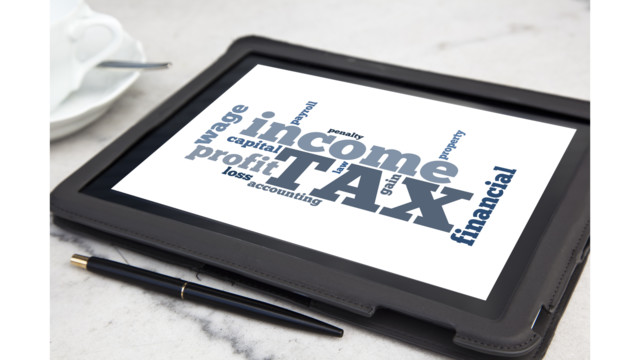ProSystem fx Practice from
CCH Tax and Accounting provides
integrated time and expense entry,
billing, project management (with
scheduling), reporting and more.
FEATURES – 5 Stars
Firm preferences include process
control, grouping and other items.
For example, firms can define multiple
offices, integrate with ProSystem
fx Tax, use engagements,
projects and tasks or not, and define
alerts and their parameters. Extensive
client records contain partner,
manager and accountant assignment,
limits, billing preferences, notes,
multiple contacts, and more. Prospects
can be segregated from clients for
easier review and reporting. Staff
information is also extensive. Users
can assign bill rates to employees
(up to 10), work codes and billing
paragraphs. Up to 250 custom fields
in total can be defined for staff,
clients and projects, yielding a
total of 750 potential custom fields.
Lists can be set up for projects,
progress status, forms, groups and
other validation and filtering.
Most items offer English, French
and Spanish options.
Greatly enhanced over prior versions,
Project Management now supports
multiple views into projects as
well as the following: planned and
actual start and finish dates, summary
budgets (total hours and amount),
frequency, priority, complexity,
status, percent complete, in charge,
team leader, alerts for tickler
days, bill or flat fee rate, custom
fields, and tasks associated with
the project. Tax forms with statutory
dates can be defined too. ProSystem
fx Practice automatically
calculates the form’s due
date.
Acting as a home base for employees,
the time entry screen focuses on
time entry while also making the
person’s Day Planner and To
Do List easily accessible for tracking
and adding appointments and tasks.
Proximity facilitates recording
time expended on a task or appointment,
which can be directly entered from
the day-planner, appointment or
To-Do windows. With a right-click
of the mouse, an appointment, project
or task can be made into a time
entry. Multiple time clocks can
be opened at one time. You can choose
to automatically pause prior running
clocks or allow them to run simultaneously.
For some, it may not be immediately
obvious how to start a clock (though
the icons follow Windows XP standards).
From time and expense records, the
program generates notifications
that alert management to critical
deadlines and budgets.
Add-on time entry modules include
Remote Time Entry for capturing
time and expenses when a computer
is not connected to the network.
It extracts a working file from
the firm database, then merges data
back in. Data can also be e-mailed
or updated via the Internet. Time
Entry PDA (Palm) allows users to
choose clients, contacts, projects
and tasks to download. For remote
entry via the Internet, a firm can
upload a subset of their firm database
to CCH servers, then subscribe to
Global Time Entry so staff and managers
can enter time and expenses.
ProSystem fx Practice supports
as many invoice and statement formats
as a firm wishes to define. The
software also includes formats designed
in Crystal Reports 9.0. WIP detail
is available along with client history
to aid in making billing decisions.
Displayed information can be customized,
as well. The Inquiry module (reporting
tool) can be called from the billing
screen, and billing options are
only a right-click away: quick bill,
detail bill, final bill, interim
bill, write-up/down, and more. The
program also supports an invoice
review and edit process as well
as Microsoft Word as an editor.
Practice Driver, a special add-on
module, brings management-by-exception
to partner and manager desktops.
Datamining time and billing data
allows firms to analyze staff, client
and task relationships. Users can
plan across four dimensions –
clients, staff, work codes and periods.
Utilizing a dashboard display, firm
performance is indicated by traffic
lights (red, yellow and green).
Practice Driver points to potential
issues as well as opportunities.
Partners can focus data using 80/20
rules to identify driving forces
and potential issues. Trend graphs,
drill down, customization of grids,
and other features round out this
exceptional tool.
INTEGRATION – 5 Stars
ProSystem fx Practice integrates
with Microsoft Outlook, ProSystem
fx Tax (two-way sync, open
a clock) and Practice Driver.
REPORTING – 4 Stars
Project and billing on-screen listings
make it easy to review status and
other information. Beyond this,
26 standard reports are available
(with content and format variations).
These include multiple realization/profit,
reconciliation, analyses and ledger
reports. Additional reports can
be created using Crystal Reports
9.0 or the built-in report wizard.
Custom reports written in Crystal
or the Custom Report writer can
be added to the reporting menu sections
of Practice.
EASE OF USE & LEARNING CURVE – 4
Stars
Practice’s new user interface
is essentially a shell into which
screens and lists display. It follows
the style of Microsoft Outlook.
The software includes shortcuts
to speed up data entry, customization
of fields and screens, and more.
Not all screens are easy to follow,
and some even seemed a little overwhelming.
However, help information partially
offsets this issue. Practice still
has a few quirks to work out, though
none that get in the way of entry
or processing. CCH recently switched
ProSystem fx Practice to
the Advantage database, and I found
the software was fast and reliable.
RELATIVE VALUE – 4.5 Stars
While the program, could serve small
firms well, many of its features
are designed for mid-sized to large
firms. Most features cannot be turned
off, leading to a higher and longer
learning curve and setup process
than a small firm owner may find
acceptable. Still, the value returned
by ProSystem fx Practice
is strong, especially with the addition
of Practice Driver.
2004 OVERALL RATING: 4.5 Stars
This review examined the following
key areas:
Features – Does the product offer remote processing capability? Is it
designed for online use? Does it have features that
can help your firm become more productive
and/or more profitable? Does it
give you better control over scheduling
or perhaps provide reports on profitability
in a variety of formats? Is the
calendar/scheduling functionality
flexible? Does it offer color coding
by employee or activity? Can group
calendars be displayed? Can e-mail,
notes, phone calls and time tracking
all be attached to a project? What
about document management and document
tracking? Can you use predefined
documents and attach them to each
client’s project?
Integration – If you rely on other products, can the time and billing
product provide or accept data to streamline operations, such as integration with Outlook?
If your firm relies heavily on Outlook for contact management, having the contact
information shared between Outlook and your time and billing product can be valuable. If you
use other products by the same vendor, can information be shared between them?
Reporting – Does the program offer extensive and flexible analytic
reporting that provides information about
productivity and profitability of
staff, clients and services to facilitate
management decision making. Does
it offer customized reports?
Ease of Use & Learning Curve – Does the program offer intuitive, on-screen
entry of time as well as on-screen, on-demand billing? Can the product be tailored and/or
customized to meet your firm’s needs and the way you like to manage your firm? Can the
program conform to your practice? Does it offer real-time updating of data? Does it provide
an easy-to-enter timesheet? Is information readily accessible? Does the program provide
unlimited number of clients, staff and engagements?
Relative Value – What is the cost of the program? What are the renewal
costs? This is a subjective opinion of whether the program and its range
of features, etc., is worth the
cost. It also examines the size
firm that would find the most value
from the product.
Thanks for reading CPA Practice Advisor!
Subscribe Already registered? Log In
Need more information? Read the FAQs



